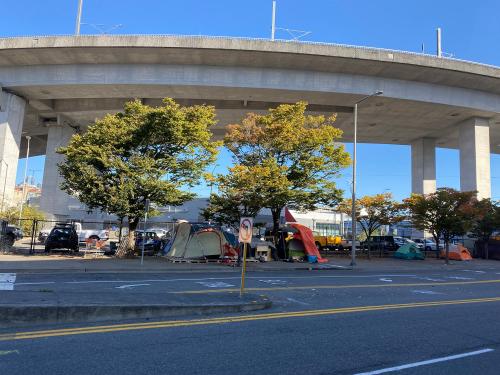Although national and state leaders often expound on the problem of crime, it is at the local level where crime reduction takes place. The gritty issues involved in reducing violence and disorder are ultimately handled by mayors and police chiefs. My own city of Oakland has adopted a tough but thoughtful strategy based on technology and intense neighborhood organizing.
Since 1992, Oakland’s homicides have dropped 70 percent. Overall crime is down 20 percent in the past 12 months. The Oakland Plan has four components: strategic community policing, careful and daily measurement of crime, intensive staff training, and city supervision of state parolees from state prison—about 3,000 in Oakland at any one time.
First, Oakland hired 19 civilian employees to organize residents into crime-prevention councils and neighborhood alert groups. The councils convene regularly and bring together the police, city personnel, and community activists to discuss matters of mutual concern. This citizen involvement breaks down the walls that separate neighbors from each other and from the police. Oakland has fewer than 700 sworn officers for a city of 400,000—way below the national average. Unless a thoughtful effort is made to involve people in defending their own neighborhoods, the underground economy of crime and violence inevitably takes over. City staff alone cannot do the job. Safe neighborhoods require a partnership based on citizen activism and neighborhood dialogue.
Second, for the first time ever, Oakland has started compiling and disseminating crime data on a daily basis. Using a geographical information system, the police department makes crime statistics available to all its personnel and to the public. Through Internet crime maps that are updated daily, trends are spotted quickly and action is promptly taken. The information is collected by beat—there are 57 in the city—thus establishing the basis for both competition and accountability. Crime is not general but occurs at precise locations and often in patterns that can be quickly identified.
Third, the Oakland Police Department provides extensive and continuing training to all its officers. Historically, the city has been recognized for its high-quality academy for police recruits. In addition, every officer is required to attend a Professional Development Academy every two years. During this training period, officers are introduced to recent court rulings, new legislation, and current issues in law enforcement.
Finally, Oakland has established a police and state corrections team to monitor the activities of individuals released on parole. The team consists of an Oakland police sergeant, six Oakland officers, and two state parole agents. It meets personally with each person released from state prison to the city of Oakland. The parolees are offered jobs, job training, and counseling for substance abuse—if appropriate—and are given fair warning that they are expected to abide strictly by the conditions of their parole.
The team keeps police officers throughout the city fully informed about all parolees residing in Oakland. The team also initiates searches for parolees who fail to maintain regular contact with their parole agents. At any one time, a fourth of the parolees are out of compliance with the conditions of their parole. In addition, a majority of all parolees ultimately return to prison because of new criminal convictions or parole violations. For that reason, intensive parole supervision—through city and state collaboration—proves to be an extraordinarily effective crime-fighting strategy.



Commentary
Fighting Crime in Oakland
June 1, 2000